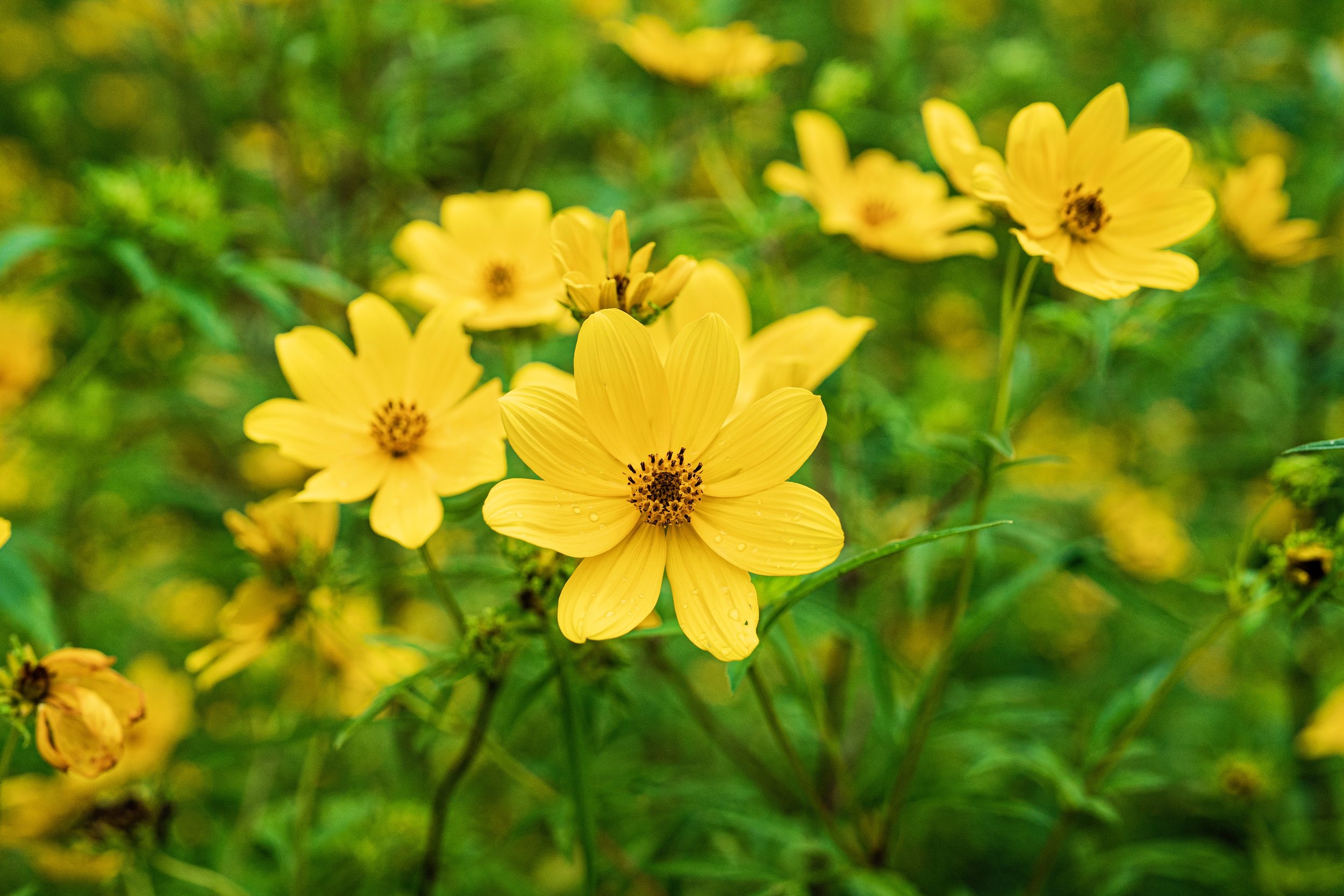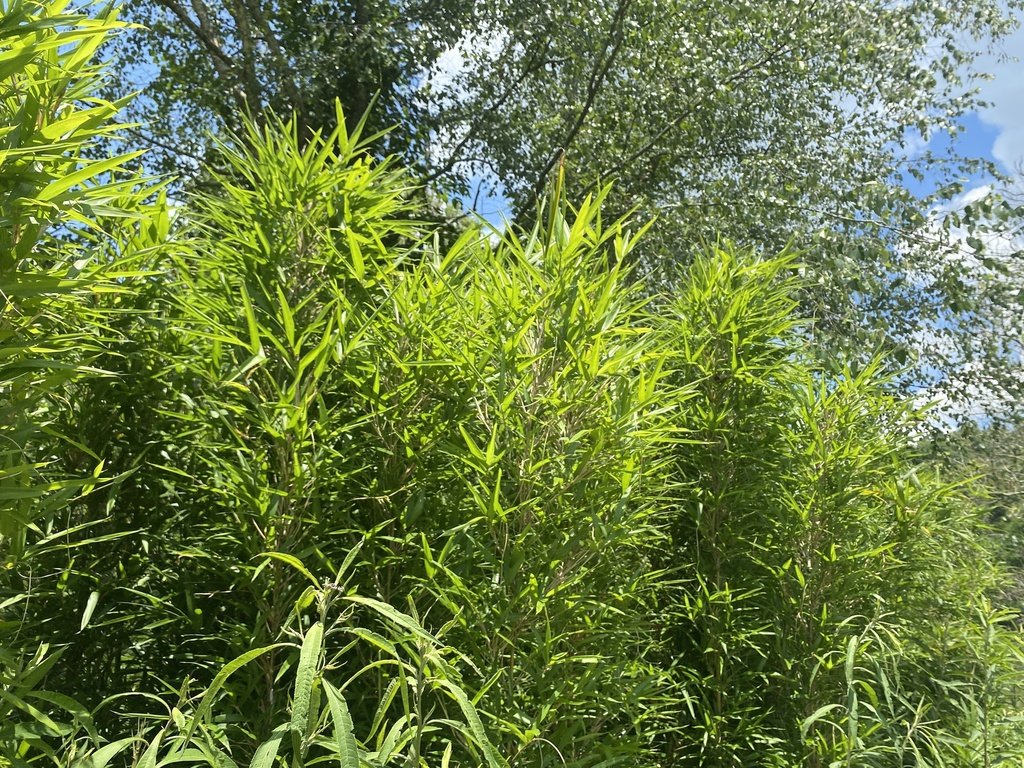“What are those yellow flowers at Reflection Riding?”
The native wildflowers in our lower meadows are bursting with beauty and it seems like everyone is talking about it! Ecosystem management of this grassland area has allowed for an abundance of native wildflowers and our eyes and the pollinators are grateful.
📸 Dakota Casteel
The real showstopper in the meadow is Bearded beggartick (Bidens aristosa), which blankets the landscape in yellow as far as the eye can see! This species is actually an annual herb within the Sunflower/Aster/Daisy family, but reseeds with so much success that it is commonly mistaken for a perennial. These plants can grow anywhere from 3-6 feet tall, making the experience of walking through the narrow paths a magical experience as the blooms commonly tower overhead!
Blooming alongside the sunflowers and throughout our property, you’ll find Giant ironweed (Vernonia gigantea). Growing up to 7 feet tall, this towering purple, perennial herb is hard to miss. Giant Ironweed is very popular amongst native pollinators, providing a food source for many species of butterflies and moths. There are a variety of additional plants blooming across campus right now including Late Boneset, Blue Mist Flower, Frostweed, Fireweed, Elephant's Foot, Passionflower, Cardinal Flower and Pink Turtlehead.
Giant ironweed in the lower meadow 📸 Dakota Casteel
As you pass through the meadow, keep an eye out for another iconic species. A few dense stands of Rivercane (Arundinaria gigantea) can be found along Lookout Creek. At home in the grass family, Rivercane is our only native species of bamboo! Historically, this plant has been and remains to be culturally significant to the Cherokee. An essential plant for everyday purposes, Rivercane has been utilized by local, native peoples in the construction of their homes, blow guns, basketry and more. Ecologically, it is a crucial factor in the health of our watersheds and streambanks. With a dense, rhizomal root system and a resilience to ever-changing conditions in riparian zones, Rivercane is a fantastic water filter and soil stabilizer. Don’t take this grass for granted! An estimated 99.8% of this plant’s historic population has been lost.
Rivercane near Lookout Creek
Grasslands are essential hotspots for biodiversity, providing many unique habitats that support rich and robust ecosystems. While these landscapes are crucial to a wide variety of mammals, birds, bees, butterflies and other pollinators, grasslands are the most reduced ecosystem in North America. Through active conservation efforts, our lower meadows have remained a healthy, prized piece of our Reflection Riding campus, supporting a great number of native wildlife species.
Don’t forget to come and see the wildflower fairyland in our lower meadow with one of our naturalists at our Get Schooled: Tickseed Sunflower program on Saturday, September 10 and 17 at 10am!
“All of us had a wonderful time, and the girls loved exploring in the flowers. The towering flowers and bees buzzing all around make for a magical experience! I encourage everyone to get out and enjoy the beauty and learn about the land around you.”




